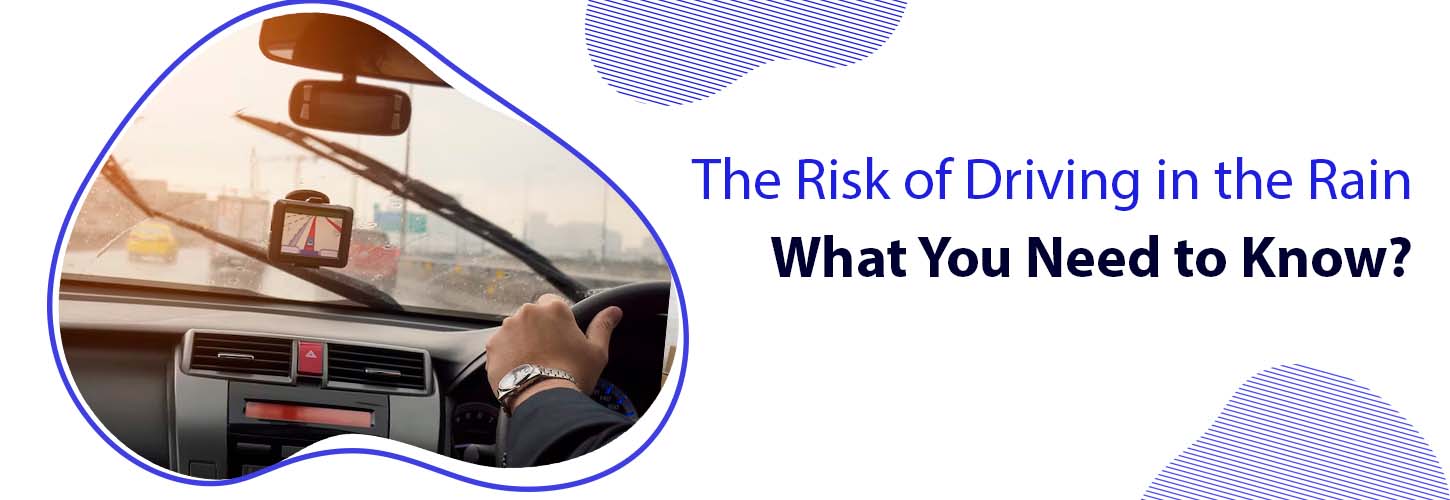
Introduction:
Rainy weather can be a nerve-wracking experience, as it introduces several challenges that require additional caution and attentiveness on the drivers’ part. It is inherently risky to drive in the rain due to reduced visibility, slippery road surfaces, and the ever-present threat of hydroplaning.
During this topic, we will examine the potential dangers of driving under such circumstances and provide valuable tips for mitigating them.
If you are driving in the rain, you should be aware of the following:
- Reduced Visibility
- Hydroplaning
- Increased Braking Distance
- Aquaplaning
- Poor Road Conditions
- Reduce Tire Grip
- Increased Chances of Accidents
When raindrops cascade down windshields, obscuring the view of the road ahead, drivers risk critical mistakes and accidents. Also, rainwater pooling on roads creates a potential hydroplaning danger, in which vehicles lose traction, skid, and become susceptible to losing control.
Braking becomes a delicate task on wet surfaces as stopping distances increase, making rear-end collisions a lurking probability. Having too much water in the air can cause your tires to aquaplane. When it rains, the roads can flood, get clogged with debris, and have standing water.
As a result of wet roads, tires have less grip on the pavement, affecting the vehicle’s handling and cornering abilities. It may result in skidding or sliding during turns or maneuvers.
When visibility is reduced, slippery roads are also present, and stopping distances are more extended, accidents are more likely to occur. If drivers fail to adjust their driving behavior to weather conditions, collision risk rises significantly.
Here are some tips for driving safely in the rain:
- Reduce Speed: Driving slower when it rains is essential to maintain better vehicle control and decrease hydroplaning risk.
- Increase Following Distance: Ensure you maintain a safe following distance between your vehicle and the vehicle in front of you. With this extra space, you will have plenty of time to react to sudden stops.
- Use Headlights: As you drive, ensure that your headlights are turned on for improved visibility for yourself and other motorists. It is best to avoid using high beams as they reflect off water droplets and reduce visibility in heavy rain.
- Check Wipers and Tires: Check that your windshield wipers function correctly and that your tires have sufficient tread depth for proper traction on wet surfaces.
- Avoid Sudden Braking and Acceleration: Keep a smooth driving style and avoid sudden maneuvers to prevent skidding and loss of control.
- Stay Updated on Weather Conditions: You should check the weather forecasts before you travel so that you will be prepared for any adverse weather conditions that may occur.
- Eliminate Distractions: Stay focused on driving and avoid distractions like using mobile phones or adjusting
the radio. Be alert and prepared for any sudden changes on the road.
“Weather-proof Your Drive: Mastering Defensive Driving at Green World Group”
Defensive driving courses offered by Green World Group are an excellent way to enhance your driving safety. Green World courses emphasize the importance of identifying hazards, avoiding collisions, and using defensive techniques to ensure drivers can safely navigate roads.
Our team of experts and state-of-the-art simulations equip drivers with the knowledge and confidence they need to make roads safer. Drive with peace of mind by choosing Green World Group for top-notch safety training.
Conclusion
Several risks can compromise the safety of drivers when driving in the rain. Drivers need to understand these risks during inclement weather and follow important safety tips in order to reduce the chances of accidents
